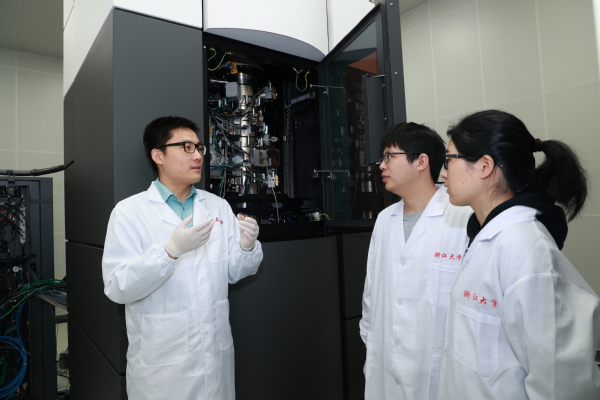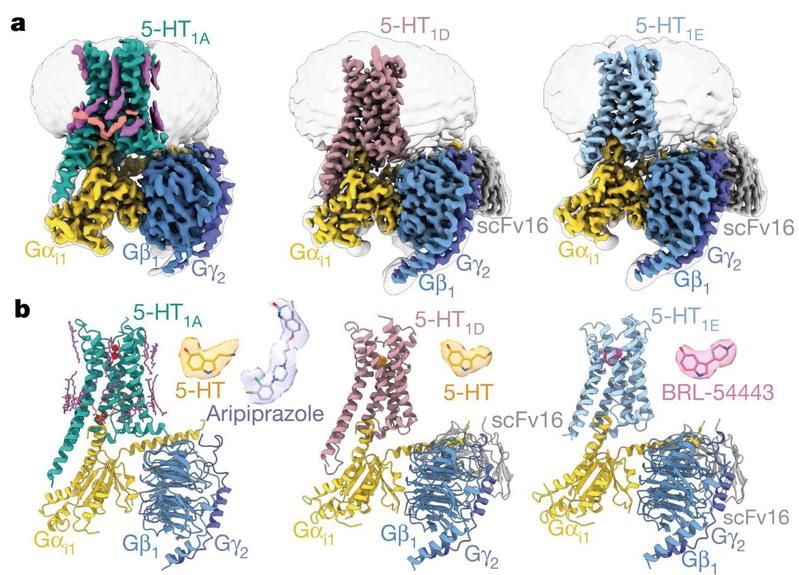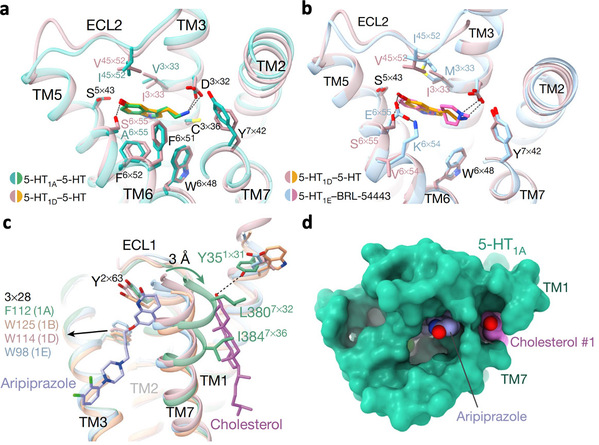Serotonin, dopamine and endorphins are the three most important substances for human happiness. Among them, Serotonin, or 5-hydroxytryptamine (5-HT), is a messenger molecule that produces a sense of well-being and happiness and is therefore also known as the "happy hormone". Fluctuations in its level are often associated with emotional changes. For example, 5-HT deficiency can lead to depression. However, the biological mechanism as to how 5-HT generates a sense of well-being has yet to be deciphered.

To unravel this mystery, the research team led by ZHANG Yan from the Zhejiang University School of Medicine and the research team led by H. Eric Xu & JIANG Yi from the CAS Shanghai Institute of Materia Medica carried out collaborative research in the past three years. With their concerted efforts, they succeeded in deciphering the precise 3D structures of different chemical substances and various subtypes of 5-HT receptors and elaborating on the role of 5-HT and chemical drugs. These findings play a positive role in selecting precise targets during drug development. This study was published in the March 25 issue of Nature.
The functions of 5-HT are in part mediated through 12 different subtypes of G-protein-coupled receptors (GPCRs). As the most concentrated receptor subtype that drugs target, 5-HT1A is the major target of aripiprazole-a drug used to treat schizophrenia and depression.

Cryo-EM structures of the 5-HT1A-Gi, 5-HT1D-Gi and 5-HT1E-Gi complexes
To this end, ZJU scientists carried out research into distinctive 5-HT1A. They found that the signaling complex of the 5-HT receptor resembles a bundle of branches inserted into a cell membrane made of phospholipids, forming a "radar-like" receiver responsible for capturing incoming signals and transmitting them to the cell.
With further assays, they found for the first time the presence of phospholipids-part of the cell membrane in this structure.

Regulation of 5-HT1A by PtdIns4P and cholesterol
This is a thrilling discovery. Phospholipids are supposed to serve as "reinforcing concrete" to hold the 5-HT receptor in place, but what is their role in this structure? Researchers found that these "inserted" phospholipids actually act as molecular glue to enhance the interaction between receptors and downstream signals. Meanwhile, they also found that cholesterol plays a similar role to phospholipids in the 5-HT receptor. "This discovery explains how 5-HT activates the 5-HT receptor and why the 5-HT receptor has relatively high basal activity in the absence of ligand activation. It also provides an answer to the long-standing question as to how cell membranes can regulate the 5-HT receptor."
In addition, in terms of whether information can be transmitted to the intracellular TM6 helix, ZHANG Yan et al. found that in comparison with other known GPCRs, the TM6 helix in 5-HT1A is longer. "This long leg can bind better to the downstream, thus facilitating the transmission of signals."
Deciphering target structures in a clear way lays a solid foundation for the development of better drugs. Although current drugs for neurological disorders can produce positive effects, they also trigger a string of side effects.

The binding of aripiprazole is regulated by cholesterol.
In this systematic study of 5-HT, researchers also conducted research into aripiprazole, a drug that can activate 5-HT1A. They found that when 5-HT and aripiprazole were used to activate the 5-HT1A receptor, the latter made a slower response when the trigger for "pleasure" was pulled.
"We also spelled out why aripiprazole is nearly 100 times more capable of activating 5-HT1A than activating 5-HT1D and 5-HT1E and why 5-HT is a passkey to unlocking a diversity of 5-HT receptors," said ZHANG Yan.
Earlier this year, the research team led by ZHANG Yan published three articles regarding the structures and functions of dopamine and its receptors (Cell 2021, Molecular Cell 2021, Cell Research 2021). "In the past, luck played a crucial role in drug screening. Now, drugs can be precisely developed if the 'lock core' can be deconstructed. With more in-depth research in the future, it will be a dream come true to develop anti-depression drugs with better efficacy and fewer side effects," said ZHANG Yan.






